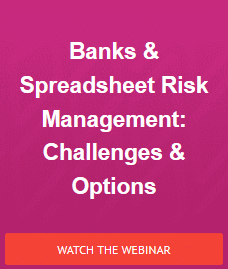COVID-19 and its Impact on Financial Services – Some Emerging Themes
It remains early days as the word responds to the COVID-19 pandemic, but there are already dynamics that are emerging in the financial services sector. Understandably, these are not making the headlines, but they are significant nonetheless, and will likely shape the industry for years to come.
The monetary and fiscal response to the COVID-19 crisis has been swift and dramatic, with US and UK interest rates reduced to almost zero, with massive liquidity and quantitative easing measures implemented and more promised if required. Regulatory requirements have also been temporarily diminished. For example, the UK’s Prudential Regulatory Authority (PRA) announced recently the suspension of the 2020 UK stress tests, a delay in implementing elements of IRB models, and a softening of expectations under the Senior Management and Certification Regime (SMCR).
One area that is not being relaxed is the use of forward-looking models under IFRS 9 – the UK equivalent of the US CECL standard. The PRA recognises that the assumptions and definitions used these models – and which are central to their importance – are going to be challenging to define and justify in such uncertain and unfamiliar times.
What is clear is that these models – and other used to manage portfolios and entire businesses – are going to be subject to enormous changes, as the pandemic, its economic impact and the response of governments ebbs and flows over the coming months.
MRM will become more important
Models will be central to how managers navigate the impact of mortgage and business loan holidays, possible universal payments to citizens, bank bailouts, reduced cyclical buffers and other initiatives put in place by governments to keep economies functioning at a basic level during the COVID-19 pandemic, or other crises.
In a highly dynamic and sustained period of change, Model Risk Management (MRM) is going to move further up the agenda. MRM – already covered by standards like SS3/18 in the UK, and SR 11 7 in the US – is key to ensuring that models are of sound design, use accurate data and reasonable assumptions, and –crucially – have effective changes controls in place covering implementation, approvals and recording.
The model risk – the scope for flawed model results caused by errors in data, calculation or in development – during periods of sustained change is significantly elevated. It has scope to have a material operational, commercial, reputational and regulatory impact on a bank, if a critical model fails at a critical moment and senior management make a flawed decision. In the current climate, for governments it can have material policy impact too.
A focus that will last beyond COVID-19
This focus on models – and the MRM that is central to them – will unlikely diminish in the coming years as management, regulators and ultimately governments utilise them to help the global economy recover, and become more resilient to a future disruptive event. The extensive use of remote working during COVID-19 – at the time of this writing – has exposed the fragility of many systems, as well as the patience and forbearance of their users.
Robust MRM systems and processes will need to be considered as part of a holistic MRM environment. Manual processes and work-arounds will be the weak points currently for users and management. What works in the office may work less well on the kitchen table or living room sofa.
Now is not the time to replace an environment wholesale, but in due course the world will return to something recognisable as normal. Until that time, here are some more insight and ideas to help you with the new reality to come.
[bctt tweet=”The extensive use of remote working has exposed the fragility of many systems, as well as the patience and forbearance of their users.” via=”yes”]




